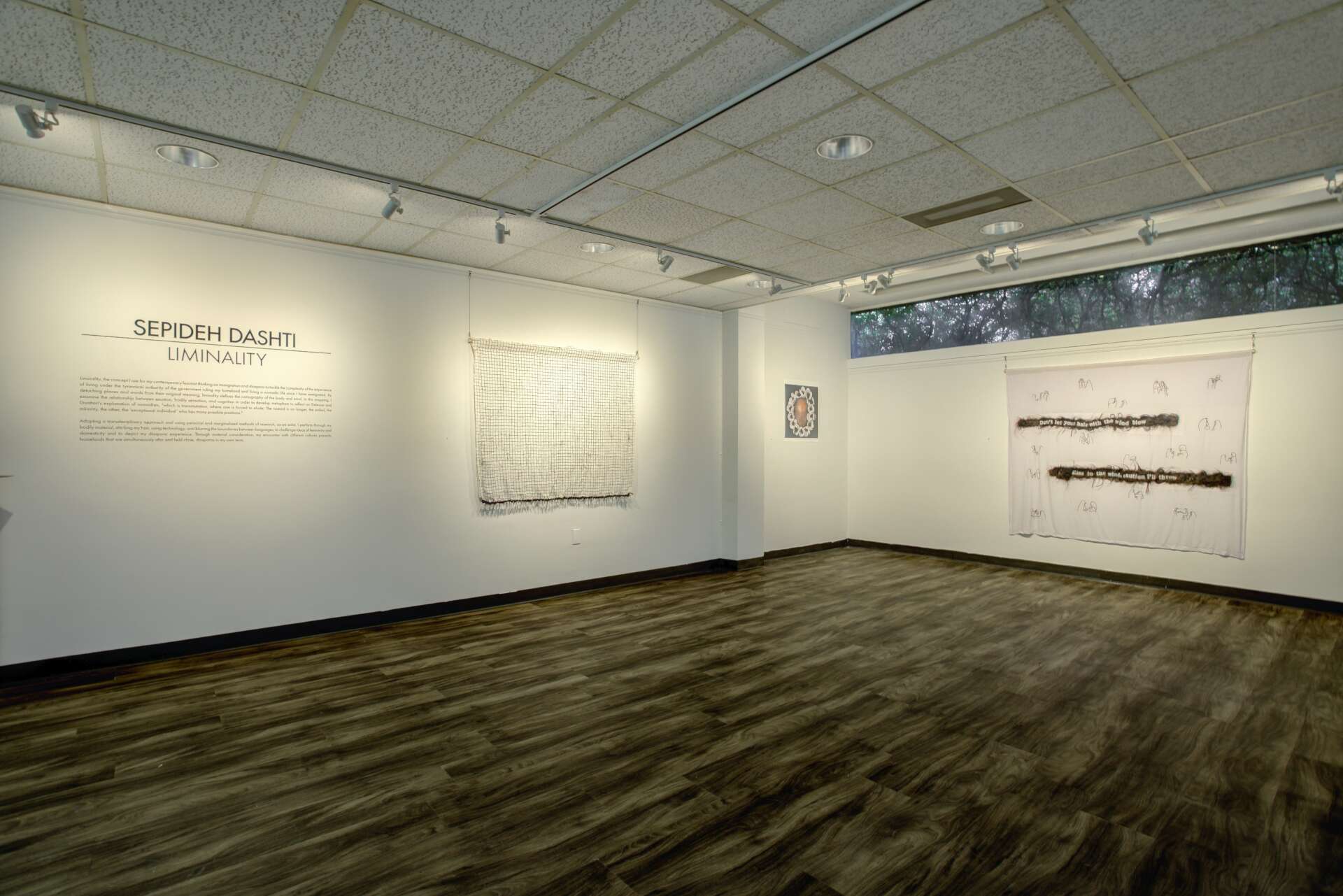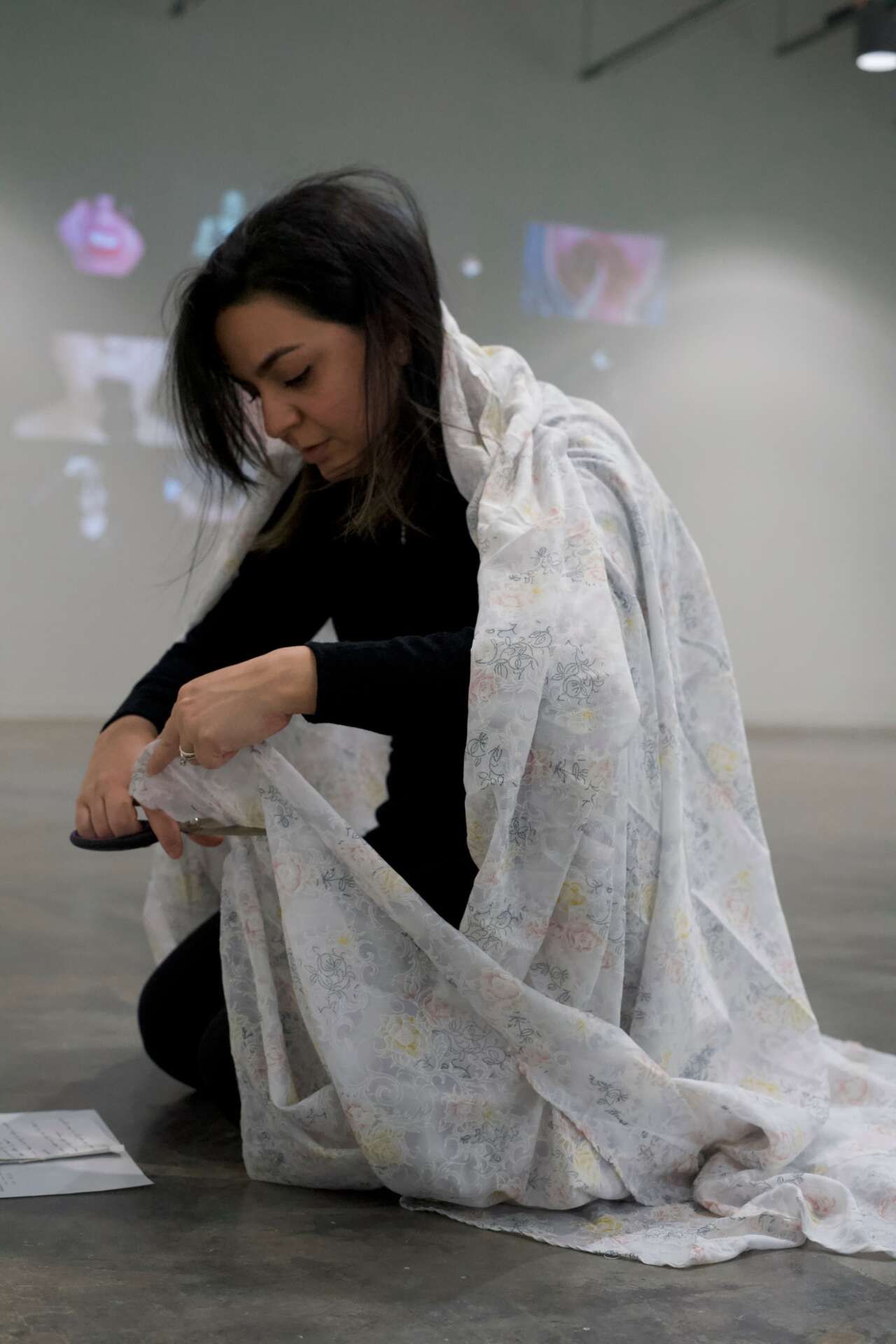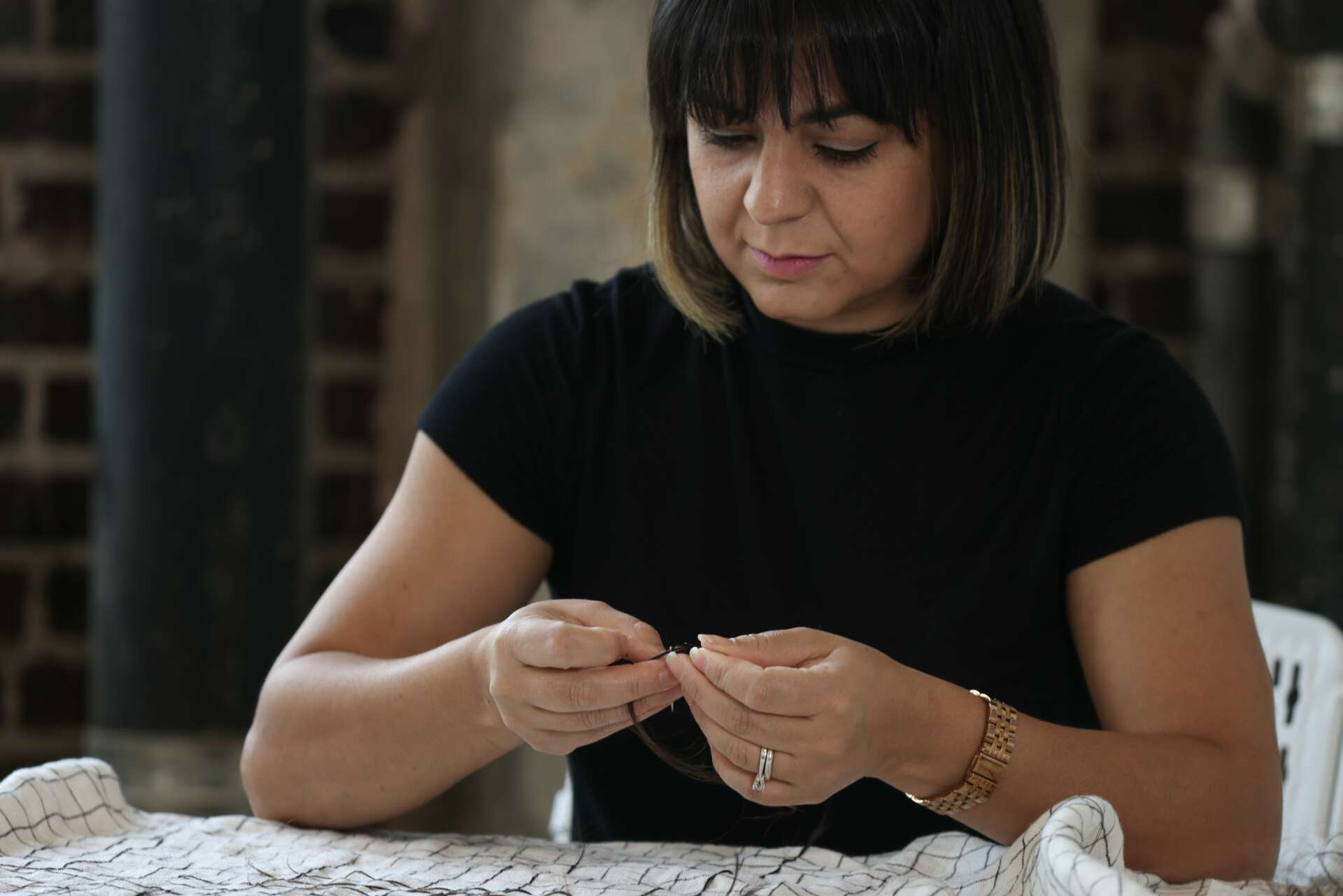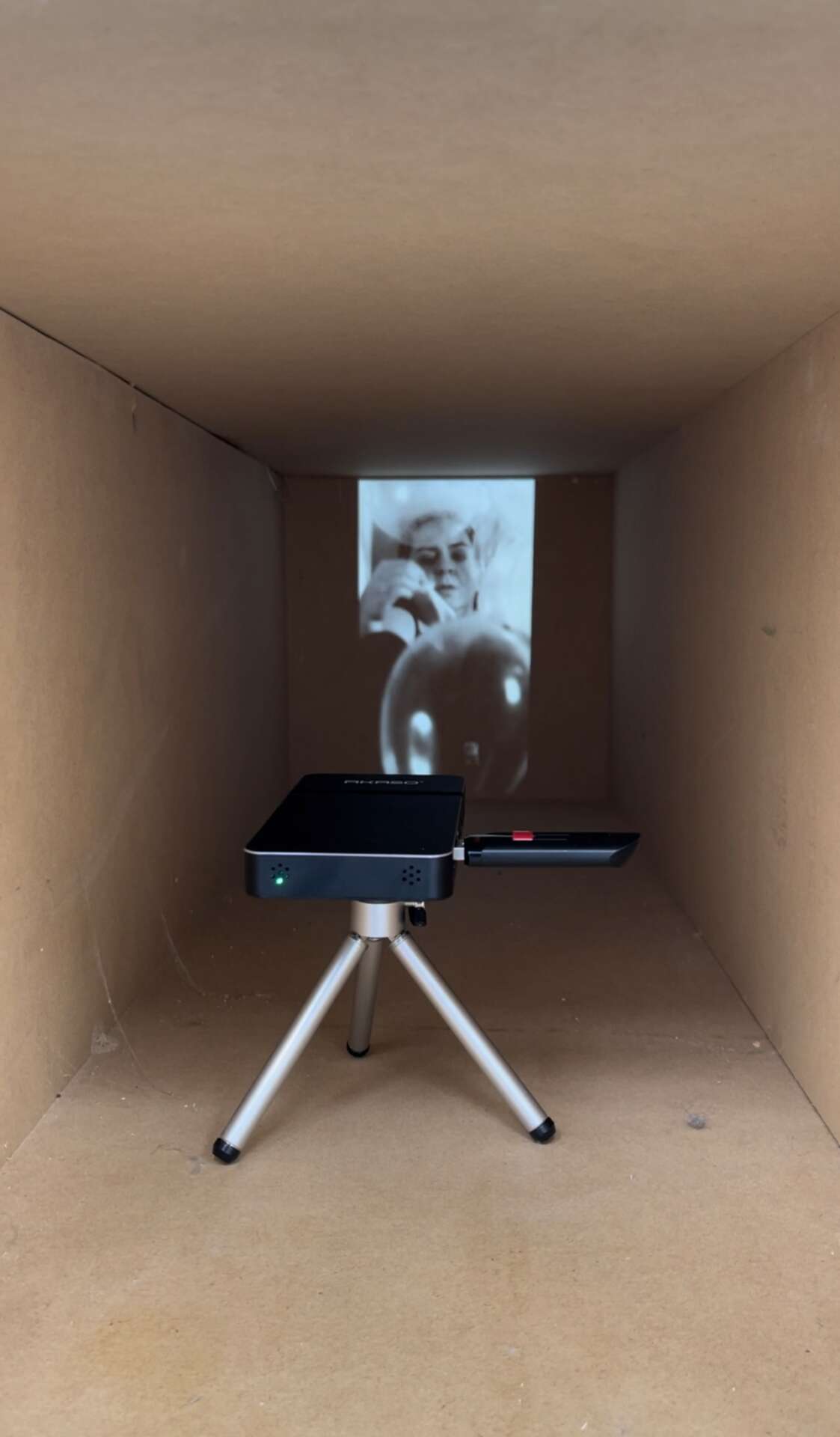We caught up with the brilliant and insightful Sepideh Dashti a few weeks ago and have shared our conversation below.
Alright, Sepideh thanks for taking the time to share your stories and insights with us today. One of our favorite things to hear about is stories around the nicest thing someone has done for someone else – what’s the nicest thing someone has ever done for you?
The emotional and financial support, as well as the career opportunities provided by the art community in Memphis, as well as my partner, have been invaluable in shaping my journey as a visual artist and educator. My life would not be the same without this support. When you’re an immigrant, you often face numerous challenges, and my experience is no exception. I migrated from Iran to Canada in 2011, and it took several years to find my footing within the Canadian art community, with whom I still maintain connections. However, in 2019, my life took a new turn as I moved to Memphis. Starting anew in a new city was challenging in itself, and the COVID-19 pandemic made it even harder. During this period, the support I received from both my partner and the Memphis art community was a lifeline. This helped me rebuild my career in a foreign land.
In particular, the people at Crosstown Arts, the University of Memphis, the art department at Kroc Center, and Christian Brothers University played instrumental roles in my journey. Their unwavering support and belief in my work allowed me to forge new connections, create meaningful art, and establish myself as an artist and educator in Memphis. Their kindness and encouragement have helped me overcome the challenges of being an immigrant artist. I will forever be grateful for the opportunities they provided.


Great, appreciate you sharing that with us. Before we ask you to share more of your insights, can you take a moment to introduce yourself and how you got to where you are today to our readers.
When I was a child, I loved drawing. At the age of 11, my parents enrolled me in a private painting class, marking the beginning of my journey into art. Over the years, I honed my skills and eventually became a painter known for creating aesthetically pleasing and realistic works that resonated with people. I began to receive commissions from friends and family, and I even participated in several group exhibitions. During this time, art was more of a passionate hobby than a career aspiration. It provided me with precious moments to share with my friends. Alongside my artistic pursuits, I pursued a career as an engineer and tutored elementary students in mathematics.
However, everything changed when I moved to Canada. Initially, I held a visitor visa, which prevented me from working. For six months, I worked as a visitor scholar at the University of Waterloo in Canada. I then stayed home due to pregnancy, and I remained home until 2013 before obtaining permanent residency to facilitate my return to school.
In my time as a stay-at-home mom, I painted several pieces. In North America, art supplies, particularly paint and canvas, were expensive compared to my homeland Iran, and my partner was studying at the time and earning only money by doing research and working as a teaching assistant. Despite my determination to pursue engineering, I often dismissed the idea of pursuing art as anything more than a hobby.
I am incredibly grateful that my partner encouraged me to revisit my artistic ambitions. I pursued a Bachelor of Fine Arts (BFA) in art, which eventually revealed the true joy and passion of my life. When I was in school, I initially imagined myself becoming a professional painter. However, the second year of my education at the University of Waterloo exposed me to contemporary art. I was fortunate to have an exceptional mentor who profoundly influenced my creative practice.
In my third year of the BFA program, I delved into feminism and contemporary philosophy, which proved to be life-altering experiences. This period marked a significant shift in my art perspective. In Iran, I regarded art primarily as a hobby, as the concept of self-expression, the power of art to challenge authority, and its potential to enact change in daily life were not prevalent ideas. The transition to an environment that encouraged critical thinking and enabled art to explore and question everyday existence was transformative for me. I subsequently pursued graduate studies at a Western university in Canada, which led to new opportunities for me as an artist.
Today, I find myself in Memphis. I passionately continue my artistic practice, create artwork, and apply for grants and exhibitions. I also share my knowledge as an instructor at the University of Memphis and the Kroc Center. Keeping my curiosity alive, I pursued a Ph.D. in educational psychology at the University of Memphis, focusing on qualitative and art-based research. Aside from my academic and artistic pursuits, I cherish my roles as mother, wife, and friend, celebrating life’s balance and richness.

We’d love to hear a story of resilience from your journey.
In my art, I explore the human experience, feminist ideas, and the strong female body. I’m working on making my creative work a form of activism. Back home, I used to create art that was pleasing to the eye and matched public tastes. However, I’ve made a significant shift in my art, which has had a personal impact because it’s more critical and not everyone appreciates it. I’ve received a lot of feedback suggesting that I should change my theme to keep my creative practice going. However, I believe that creating art that reflects the real world and includes everyone is important. It’s like making a democratic space where everyone’s voice is heard. Fortunately, the community in Memphis supports the kind of art I’m creating now, and I’m grateful for that.

For you, what’s the most rewarding aspect of being a creative?
The most rewarding aspect of my art is the impact it has had on my personal life. I believe my partner and I have undergone a profound transformation since I began to challenge the traditional notions of domesticity that confine women to the roles of homemakers, caretakers, and devoted wives and mothers. Initially, we were simply husband and wife, with our roles and lives shaped by the traditions and patriarchal culture we were raised in. However, now our relationship has transcended those traditional labels. It goes beyond the conventional definitions of husband and wife, mother and father. In essence, our partnership has erased the binary distinctions between man and woman, allowing us to explore a more equitable and inclusive way of living together and raising our children in this environment. However, this shift in my personal life wasn’t easy, and it remains somewhat precarious. We continue to learn and grow, and everyday life challenges can still impact our relationship.


Contact Info:
- Website: https://sepidehdashti.com
- Instagram: sepideh.t.z.d
- Linkedin: https://www.linkedin.com/in/sepideh-dashti-09b92546/
Image Credits
1. Documenting public performance Photo by Joseph Tracy Garrett 2. Document of exhibition space Christian brothers 1university 3. Documentation of performance in Ruffine Gallery Department of Art, University of Virginia 4. Artist in residence Crosstown arts residency. Memphis 5. Video installation Artist documentation 6. Document of exhibition space Xpace, artist-run gallery in Toronto, Canada


